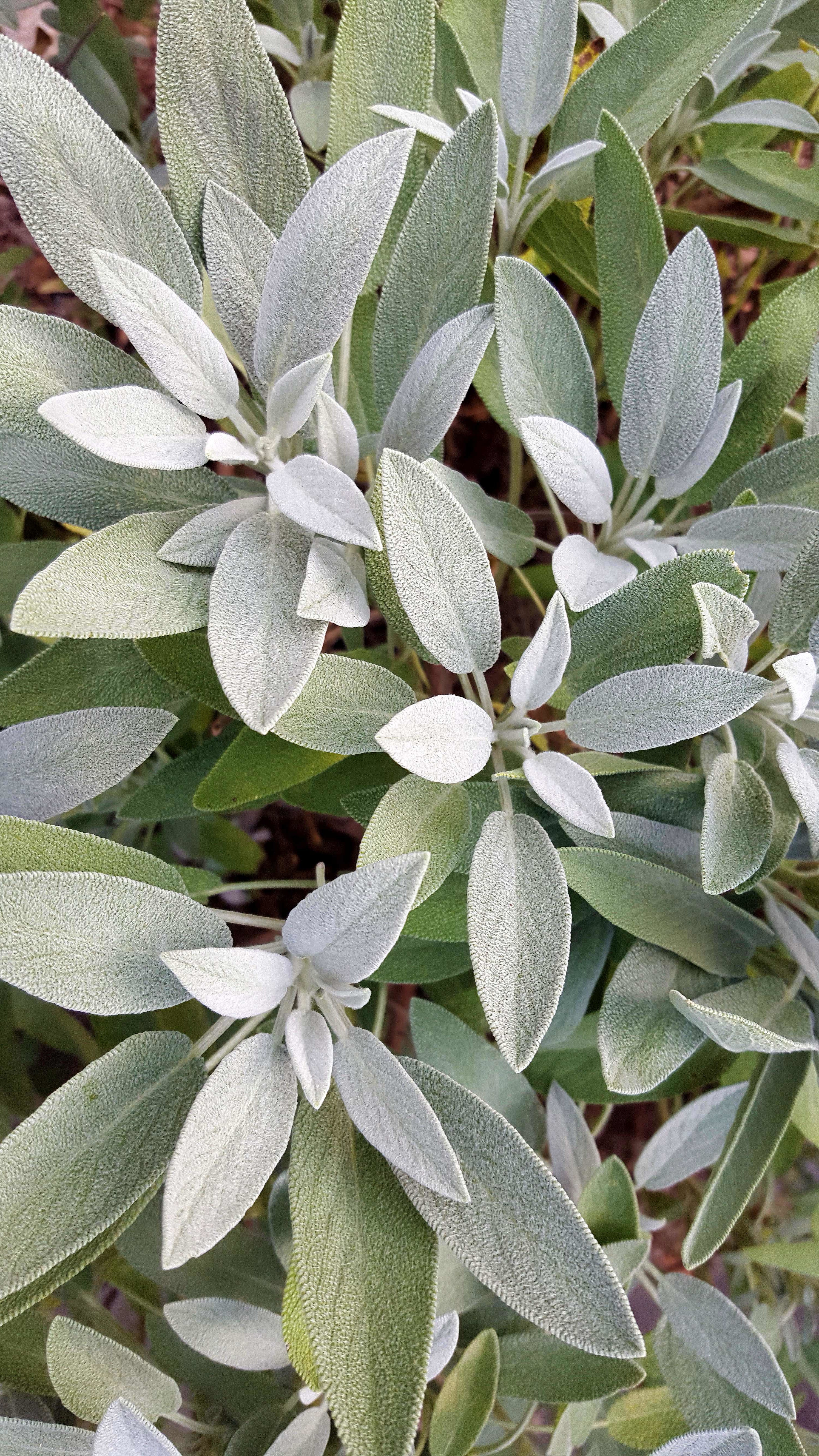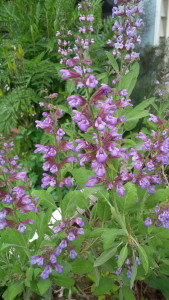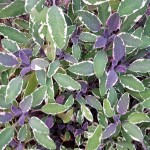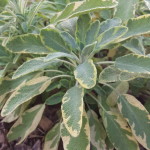Sage (Salvia officinalis), that staple of the Thanksgiving feast, has a long history and varied uses. In ancient times it was used to cure snake bites, increase women’s fertility and to ward off evil. In the Middle Ages, it was used as one of the ingredients of Four Thieves Vinegar, reputed to ward off the Plague.
Sage also has a long history of culinary uses. It is featured in cuisines around the Mediterranean (where it is a native) in the Baltic regions, the Middle East, and Italy. Strangely, although promoted by Charlemagne, sage is almost never used in French cooking. Spreading out of its home around the Mediterranean, sage is used in British cooking and then spread to America thanks to European colonists.
In modern times, we often use the colorful cultivars of sage, such as purple sage, tri-color sage and golden sage, as ornamentals in our gardens.
Sage is a woody subshrub that is native to the Mediterranean region but has spread throughout the world. It is hardy in zones 5 through 9. Like most Mediterranean herbs, it prefers soil that is well-drained and not too rich. It is drought tolerant. Over-watering it will kill the plants. Sage prefers full sun but will tolerate some shade. It tends to get leggy in the shade though.
The most common sage grown for culinary purposes, the so-called Common or Garden Sage, grows 2 to 3 feet in height. The leaves are gray and textured and can be used fresh or dried. Sages have typical salvia type flowers usually in blue, but they can range in color from white to pink to lavender. Bloom time is late spring to early summer. Stems are woody. As the plants get older and woodier, the leaves lose some of their taste. Most gardeners replace their plants every 3 to 4 years.
Pruning
Common sage should be pruned every year. Most recommendations are to prune the larger woody stems in the spring but if you do that, you will be cutting off the flower buds which were set the year before. If you love sage flowers as much as I do, wait until after your plants bloom to prune them. When the sage flowers die, prune back your plants beyond where the flowers started, usually about one third of the plant height. If your sage plants are too tall or bushy, like rosemary, it can stand a hard pruning. New growth should start to appear within 2 to 3 weeks. Be careful not to prune any woody stems that have no associated green growth.
Propagation
Sage plants are easy to find in local nurseries, so most people buy plants for their gardens. Sage is easily propagated by cuttings, layering or seeds. To layer sage, you need an existing plant. Just bend a side branch down until it makes contact with the soil. You may have to fasten it down with the same type of staple you would use to anchor shade cloth. The part of the branch in contact with the soil will develop roots. At that point all you need to do is sever it from the “mother” plant and transplant the new plant into your garden.
To make a cutting, you would use an actively growing branch. Cut a piece 3 to 4 inches from the growing tip, strip off the leaves from the bottom, dip it into rooting hormone to encourage the growth of roots and insert your cutting into sterile soil or soil-less mix. Keep your cuttings moist. Roots have begun to develop when your cuttings start to develop new leaves. Plant your seedlings in your garden at least 12 inches apart.
Sage is easy to grow from seeds. Because sage is a shrub, it grows more slowly than your herbaceous herbs. It will take two years to reach maturity when grown from seed. You can direct sow your seeds in the fall or start them indoors 6 to 8 weeks before your last frost. Plant the seeds ¼” deep in sterile soil-less mix and keep it moist. Germination should be in 3 weeks. Wait at least 2 weeks after your last frost, when the soil has begun to warm, to move your seedlings into your garden. Plant them 12 inches apart.
Harvesting
For best results, if grown from seed, wait one year before harvesting leaves so the plants have a chance to reach maturity. After that, the leaves can be harvested at any time during the growing season although they have the most flavor both just before and just after flowering. Harvested leaves can be used fresh for immediate use or can be dried or frozen for later use.
Ornamental Sages
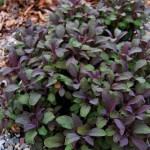
Purple Sage
Purple Sage (Salvia officinalis ‘Purpurascens’) New foliage is purple, turning green as it ages. The purple color is more intense the less sun the plants get. Plant forms a rounded clump 1 ½ feet around. Prefers shade and dry soil. Hardy in zones 5 through 8.
Tri-Color Sage (Salvis officinalis ‘Tricolor’) Foliage is green or purple with white edging. Green and white only when shaded. Grows 2 – 3 feet tall. Prefers full sun and dry soil. Hardy in zones 6 through 9.
Golden Sage (Salvia officinalis ‘Aurea’) Foliage is green edged with gold. Grows 18 inches. Prefers full sun and dry soil. Hardy in zones 7 through 9.

